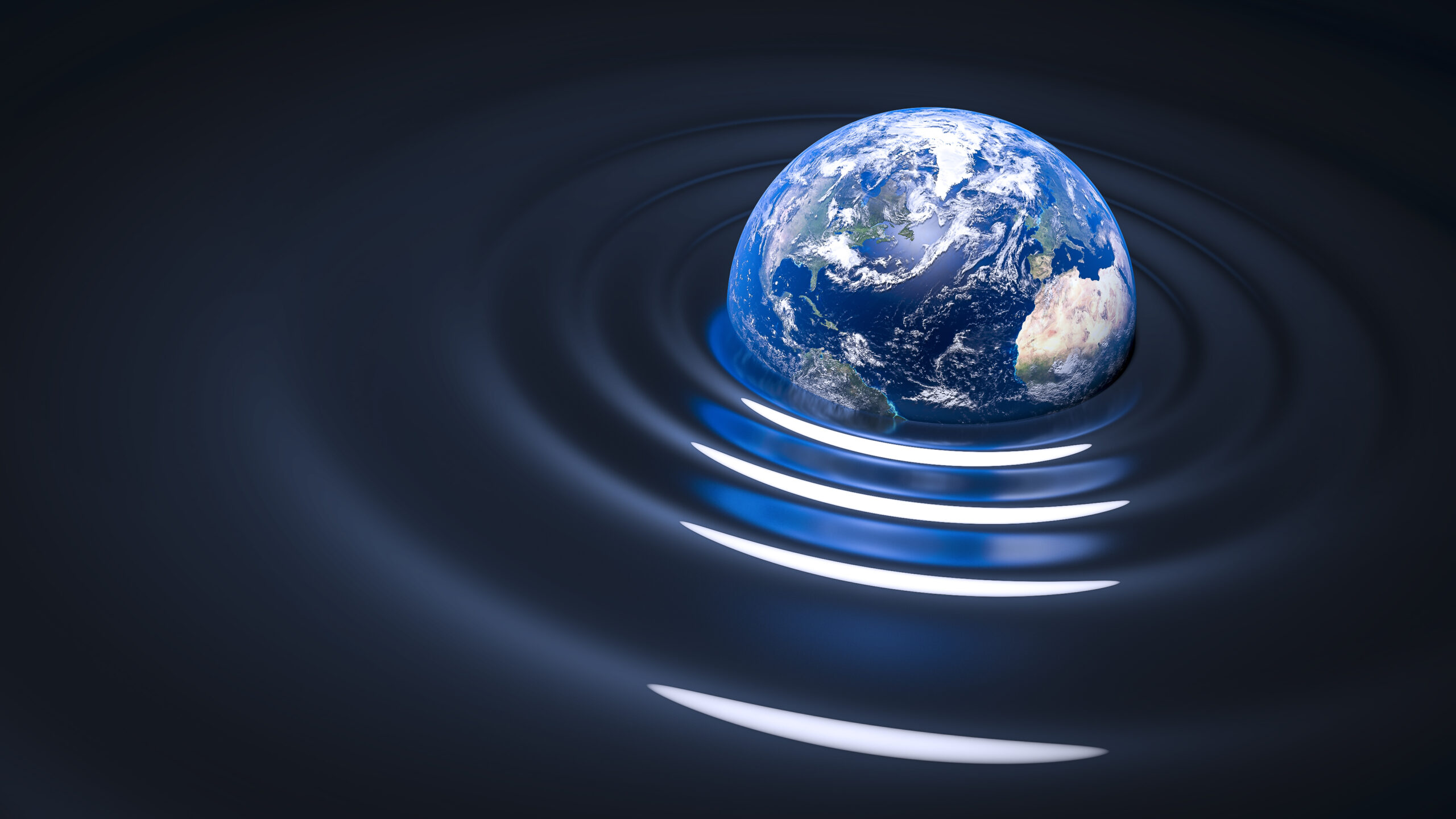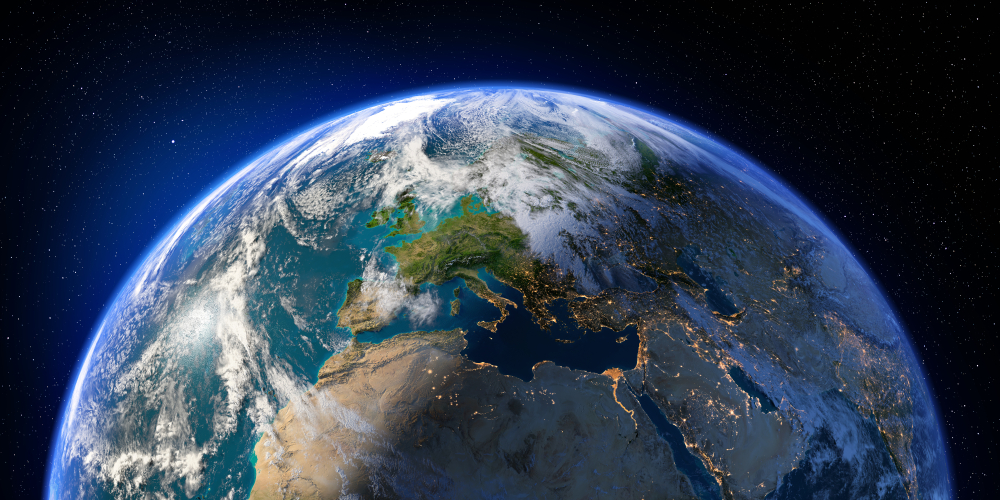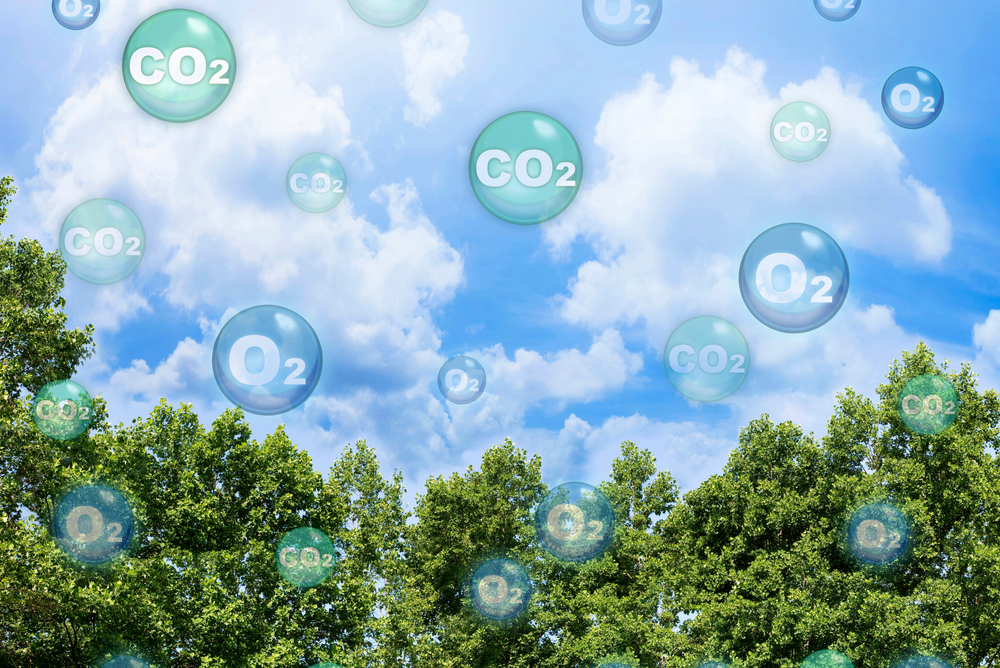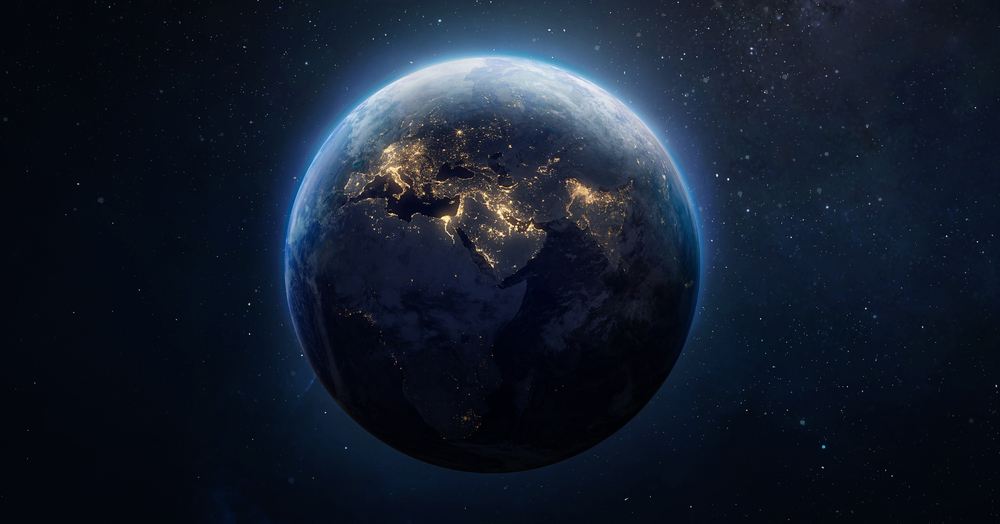NASA Scientists Reveal Exact Moment Earth Will ‘Run Out of Oxygen’ as Co2 Continues to Increase

What if the very air you’re breathing right now had an expiration date?
Not tomorrow. Not next century. But ticking down, quietly, inevitably. According to a NASA-supported study, Earth’s atmosphere—rich in life-sustaining oxygen—won’t last forever. In about a billion years, the sky we know will change. The oxygen will vanish. The air will grow toxic. And life, as we know it, will disappear.
It sounds like the plot of a science fiction film. But it’s not. It’s the story of a living planet following its natural script, one shaped by the slow brightening of the Sun and the hidden machinery of Earth’s atmosphere. Researchers have run the numbers—400,000 simulations, to be exact—and the future they reveal is both fascinating and unsettling.
But this isn’t just about the distant future. It’s about what that future says about us—now. About the air we take for granted. The balance we barely understand. And the question we rarely ask:
What will we do with the time we still have to breathe?
What the NASA Study Reveals
A billion years. That’s the estimated time Earth has left with a breathable atmosphere. It might sound like an eternity—but in cosmic terms, it’s a blink. That’s the sobering conclusion of a NASA-backed study published in Nature Geoscience, where scientists used advanced climate-biogeochemical models to simulate the long-term evolution of our planet’s atmosphere. Their mission? To find out exactly when Earth will stop being habitable for complex life.
At the heart of this research are two scientists: Kazumi Ozaki of Toho University and Christopher Reinhard of Georgia Institute of Technology. Using supercomputer simulations—over 400,000 runs with varied conditions—they created a model of Earth’s future. The verdict was startlingly consistent: in approximately one billion years, our oxygen levels will crash, dropping to less than 10% of what we breathe today.

Why? It begins with the Sun. As it ages, it gradually gets hotter and more luminous. That extra solar energy will heat Earth’s surface, increasing water evaporation and triggering powerful chemical reactions in the atmosphere. These changes will slowly destabilize Earth’s climate system and disrupt the carbon cycle—the process that regulates carbon dioxide through rock weathering and plant activity.
As CO₂ levels decline, a domino effect begins. Plants, unable to photosynthesize effectively, start to die. With plant life gone, oxygen production grinds to a halt. The air becomes thinner, not in volume, but in vitality. Slowly, the atmosphere transitions into a state rich in methane, low in carbon dioxide, and nearly void of oxygen—eerily similar to Earth’s early environment before the rise of complex life.
But this isn’t a slow fade stretched over billions of years. Once Earth crosses a certain threshold, the study warns, deoxygenation will occur rapidly—on a geological timescale, possibly within just a few thousand years. That’s a sudden drop in planetary terms, like a candle snuffed out after a long, steady burn.
From Oxygen Oasis to Methane World

Over 2.5 billion years ago, our planet was shrouded in a toxic haze. The atmosphere was rich in methane, devoid of oxygen, and incapable of supporting anything more complex than microbial life. Then came the Great Oxidation Event—a revolutionary shift driven by single-celled organisms that learned to harness sunlight through photosynthesis. These microscopic pioneers pumped oxygen into the air, setting the stage for complex life to flourish.
Now, scientists believe we’re headed full circle.
According to the NASA-supported study, the oxygen-rich atmosphere we rely on is temporary. As the Sun grows hotter over time, it will accelerate the breakdown of Earth’s environmental balance. One of the first casualties will be the carbonate-silicate cycle—a geochemical process that regulates CO₂ levels by weathering rocks and forming carbonates. As this cycle slows, atmospheric CO₂ will drop below the threshold needed for plants to survive.
Without plants, there’s no photosynthesis. And without photosynthesis, there’s no oxygen production.

As the last vestiges of plant life vanish, the atmosphere will begin to shift dramatically. Oxygen levels will plummet, while methane—a gas once abundant on primordial Earth—will rise again. Simultaneously, ozone, our invisible shield against harmful solar radiation, will disappear. With no oxygen to sustain it, the ozone layer collapses, exposing the planet to even more heat and radiation.
The end result? A return to Earth’s archaic past. A thick, methane-laden sky. No ozone. Almost no oxygen. An atmosphere that mirrors a world before the first fish ever swam or the first tree ever grew.
But it’s not just about chemistry—it’s about survivability. For most complex life forms, including us, this atmospheric transformation is a death sentence. Our cells, our lungs, our very biology are built around oxygen. As it vanishes, so does our ability to survive. Only simple, anaerobic organisms—those that thrive without oxygen—might persist, tucked away in the shadows of this new, ancient Earth.
What It Means for Life—And Death—on Earth

As Earth approaches its atmospheric tipping point, rising temperatures and diminishing carbon dioxide levels will stress ecosystems to their limits. Before oxygen ever vanishes, the climate will grow increasingly inhospitable. Think of scorching heat waves, erratic rainfall patterns, oceans losing oxygen, and mass die-offs of plants and animals—not in a single catastrophic event, but as a long, drawn-out suffocation of biodiversity.
Then comes the real fall: once the last green photosynthesizing life disappears, the oxygen supply nosedives. Complex organisms like humans, birds, mammals, and fish—species that depend on oxygen for survival—will no longer be able to breathe. The Earth will effectively purge most of the life it once cradled.
This isn’t speculation—it’s the logical conclusion of the physics and chemistry that govern our world. And it’s why this study is so profound. It reminds us that our existence isn’t built into the design of the planet. It’s a fortunate phase in a long cosmic story, one that began in methane and may one day return to it.
What’s even more haunting is the speed. Though a billion years sounds distant, once the threshold is crossed, the transformation happens fast—on the order of thousands of years. That’s not enough time for complex life to adapt. Evolution can’t keep up. And barring some unfathomable technological leap, humanity wouldn’t survive it either.
The only possible survivors? Microbes. Anaerobic bacteria—life that doesn’t need oxygen—will once again inherit the Earth. In a poetic sense, they’ll be the silent witnesses of a planet cycling back to its origins. Life won’t disappear entirely. But the vast, breathing symphony of Earth as we know it—forests, oceans, animals, people—will go silent.
Why This Changes the Way We Search for Life

When we peer into the night sky, scanning distant worlds for signs of life, we often look for a familiar signal—oxygen. It’s been our go-to biosignature, a chemical fingerprint of life as we know it. After all, on Earth, oxygen was the great turning point—the invisible force that allowed fish to swim, birds to fly, and humans to dream.
But what if that signal is fleeting? What if we’re looking for life at the wrong time?
The NASA-supported study forces us to rethink how we define a “living planet.” Earth’s breathable atmosphere, it turns out, may only last for 20–30% of the planet’s total lifespan. For billions of years, Earth was oxygen-poor. And in the distant future, it will be again. That means if alien civilizations had trained their telescopes on Earth during its first or last acts, they’d find a world seemingly lifeless—even though it was, or is, very much alive.
This revelation has profound implications for astrobiology. When scientists search for habitable exoplanets, they typically look for oxygen and ozone in the atmosphere, assuming these are reliable signs of life. But Earth’s story says otherwise. A living planet may not always advertise its life. Its biosignatures may be missing, obscured, or momentary.
In fact, this study encourages scientists to expand their criteria—to look for a broader palette of gases and atmospheric clues that point to biological activity. Methane, nitrous oxide, sulfur compounds—each could be part of a life-supporting system in a different evolutionary window. Earth itself once hosted life without oxygen, and it may do so again.
Understanding how Earth’s oxygen evolved—and how it will disappear—offers a kind of cosmic decoder ring. It allows us to read other worlds more accurately, recognizing the different phases of planetary life. It also helps us avoid missing life simply because we’re expecting it to look like ours.
Lessons for Today’s Climate Crisis

The study’s long-term projection underscores a profound truth: life on Earth is balanced on a knife’s edge. Even natural, predictable changes—like the Sun’s brightening—can dismantle the systems that make our world habitable. And if nature alone has the power to do that slowly, what happens when we accelerate the damage ourselves?
Today, we’re already seeing atmospheric disruption—not from a billion-year solar shift, but from our own hands. Fossil fuel combustion is thickening our atmosphere with greenhouse gases, altering global temperatures, triggering extreme weather, and pushing ecosystems past their breaking points. The carbon cycle, so critical to Earth’s long-term stability, is being overwhelmed in real time.
What the NASA-supported research reminds us is that Earth’s habitability is not permanent or guaranteed. It’s conditional. Temporary. And when we tamper with the climate—when we treat the atmosphere as disposable—we’re gambling with a system that doesn’t forgive carelessness.
Some scientists have floated geoengineering ideas—giant mirrors to reflect sunlight or aerosol injections to cool the planet. But these are bandages, not cures. They highlight our desperation more than our wisdom. The real challenge isn’t to “hack” the Earth—it’s to respect its balance while we still have one.
The billion-year oxygen countdown may seem like science for the far future. But its lesson is urgent now: what sustains us can also be lost. And the more we understand our planet’s fragility, the more sacred our responsibilities become.
What Will We Do With the Time We Have?
Earth is not eternal—not in the way we often imagine. Its skies, its oxygen, its delicate climate… these are not static gifts, but fleeting conditions in a long cosmic drama. The NASA-supported study may speak of events a billion years away, but the message it leaves us with is timeless: this moment is rare, and it matters.
We are living in the golden hour of Earth’s habitability—a period of balance where oxygen flows, ecosystems breathe, and life thrives in dazzling complexity. But how long we stay in this chapter depends not only on the arc of the stars, but on the hands that write today’s story: ours.
Will we continue to treat Earth as if it’s indestructible? Will we keep building a future that forgets the fragility of our present?
Or will we pause—breathe—and remember that every tree, every breath, every living system is part of a fragile equation that once tipped in our favor and could one day tip away?
This isn’t about fear of the distant future. It’s about reverence for the now. The air we have, the life we share, the planet we walk—it’s all temporary. And that’s what makes it sacred.
So ask yourself—not just as a reader, but as a participant in this great unfolding:
What will you do with the time you still have to breathe?
Loading...

